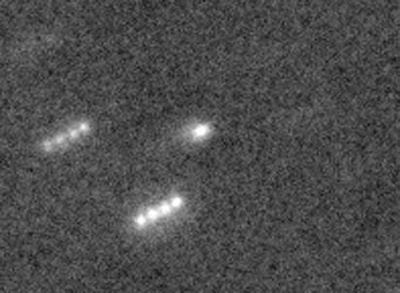Bright Prospects for Comet Elenin?
Comet Elenin (C/2010 X1) made its debut on December 10th when Leonid Elenin, an observer in Lyubertsy, Russia, remotely acquired four 4-minute-long images using an 18-inch (45-cm) telescope at the ISON-NM observatory near Mayhill, New Mexico. Follow-up images by Aleksei Sergeyev and Artyom Novichonok at Maidanak Observatory in Uzbekistan revealed more about the new find: a teardrop-shaped, very diffuse coma just 6 arcseconds across and a tiny tail.
What's gotten hearts beating a little faster since the discovery is that Comet Elenin is still more than 4 astronomical units (375 million miles) from the Sun and headed inbound. It's still early, and the orbit is certain to change in the weeks ahead, but right now it appears the comet's perihelion will occur well inside Earth's orbit, about 0.45 a.u. (42 million miles) from the Sun, on September 5th.
Right now, odds are that Comet Elenin will become an easy target for binoculars around mid-August and reach naked-eye visibility for a couple of weeks around perihelion. The comet's elongation from the Sun shrinks to just 1° following perihelion, but soon thereafter the comet gets enough separate to position itself nicely for viewing in the predawn sky.

Leonid Elenin |
Moreover, it's traveling very near the ecliptic plane, and as it sweeps close to the Sun its sky location won't stray far from the celestial equator until mid-September, when the path arcs slowly northwestward through Leo. That's a plus for skywatchers in the Northern Hemisphere. |
